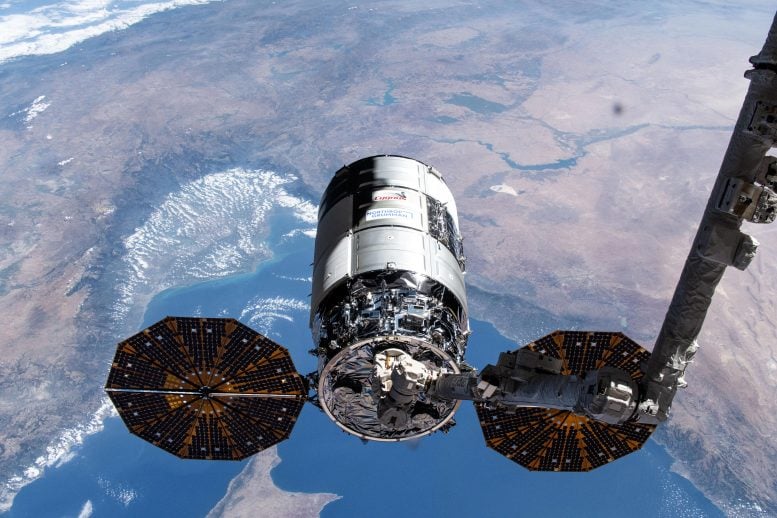
Northrop Grumman’s Cygnus cargo craft, with its prominent cymbal-shaped UltraFlex solar arrays, is pictured in the grips of the Canadarm2 robotic arm shortly after its capture was commanded by Expedition 71 Flight Engineer Matthew Dominick of NASA. The maneuver marked the 50th free-flying capture for the Canadarm2 robotic arm. The International Space Station was orbiting 262 miles above the Mediterranean Sea at the time of this photograph. Credit: NASA
Onboard the International Space Station, Expedition 71 crew members unpacked new supplies, carried out climate and biology experiments, and prepared for upcoming cargo transfers. They also maintained operational proficiency with the Starliner spacecraft, amidst their regular maintenance and scientific research tasks.
The residents aboard the International Space Station (ISS) continued unpacking several tons of science and supplies packed inside Northrop Grumman’s Cygnus cargo craft on Wednesday. The seven-member Expedition 71 crew also studied an array of space research while the two Boeing Crew Flight Test astronauts from NASA reviewed their Starliner spacecraft’s systems.
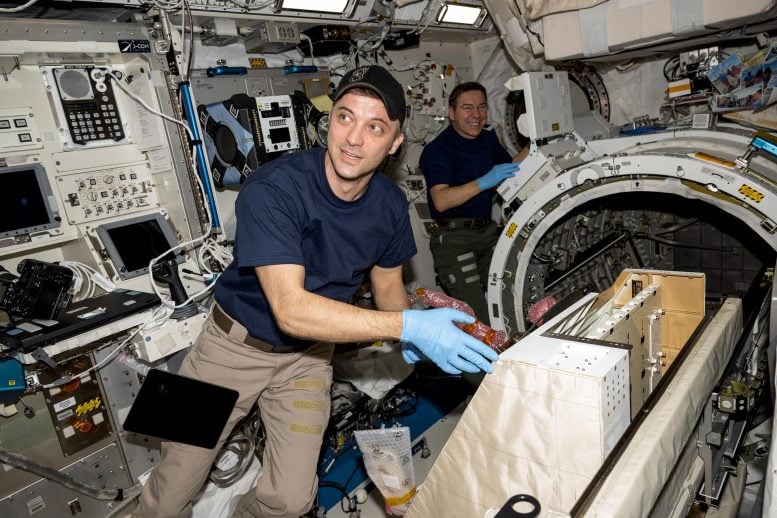
(From left) NASA astronauts Matthew Dominick and Mike Barratt, both Expedition 71 Flight Engineers, install the NanoRacks external platform inside the Kibo laboratory module’s airlock. The platform from NanoRacks can host a variety of payloads placed outside the International Space Station and exposed to the external space environment for science experiments, technology demonstrations, and more. Credit: NASA
NASA Flight Engineers Matthew Dominick, Mike Barratt, and Jeanette Epps spent the afternoon transferring cargo out of the newly arrived Cygnus space freighter. Starliner Pilot Suni Williams started the cargo work during the morning beginning the job of replenishing the orbital outpost with food, fuel, supplies, and new science experiments.
Earlier in the day, Dominick and Barratt conducted science operations to learn more about Earth’s climate and install a new research incubator. Dominick photographed the Moon from inside the cupola to measure sunshine reflected from the Earth. Results may provide scientists insights into climate change. Barratt installed and activated the Space Automated Lab Incubator (SALI) inside the Kibo laboratory module. The SALI can host a variety of samples at a range of temperatures supporting numerous space investigations into biology and physics.
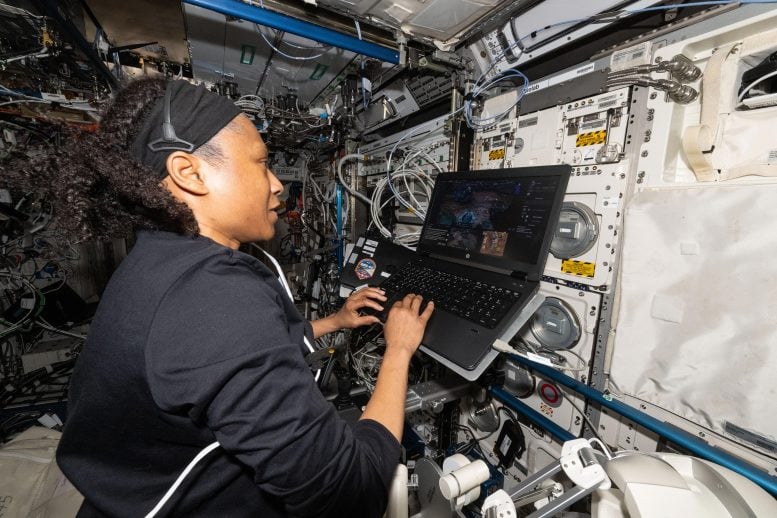
NASA astronaut and Expedition 71 Flight Engineer Jeanette Epps is pictured inside the International Space Station’s Columbus laboratory module. She was exploring ways to control a robot on the ground from a spacecraft. Epps coordinated with robotics engineers on Earth remotely manipulating a robot using a computer while testing its ergonomic features and haptic feedback for conditions such as wind and gravity. Results may inform future exploration missions to the Moon, Mars, and beyond. Credit: NASA
Epps and NASA astronaut Tracy C. Dyson also spent their day on a variety of station science and maintenance duties. Epps transferred water between life support systems, configured a radiation detector, then wrapped up her shift with biomedical checks. Dyson worked inside the Destiny laboratory module throughout Wednesday configuring research hardware to study stem cells for treatment purposes and commercial use.
Williams joined Starliner Commander Butch Wilmore and reviewed on a pair of tablet computers the Boeing Starliner crew flight procedures and systems to maintain their operational proficiency. NASA managers also provided mission updates and answered reporter’s questions about Starliner and space station operations during a media teleconference on Wednesday:
Roscosmos cosmonauts Oleg Kononenko and Nikolai Chub tested the telerobotically operated rendezvous unit’s, or TORU, ability to communicate with the Progress 87 space freighter docked to the Zvezda service module’s rear port. The Progress 87 is due to depart the orbital outpost early next week making space for the arrival of the Progress 89 cargo craft with a fresh load of food, fuel, and supplies just over a week later. The TORU would be used to remotely control a Roscosmos spaceship in the unlikely event the spacecraft would be unable to complete its automated arrival or departure.
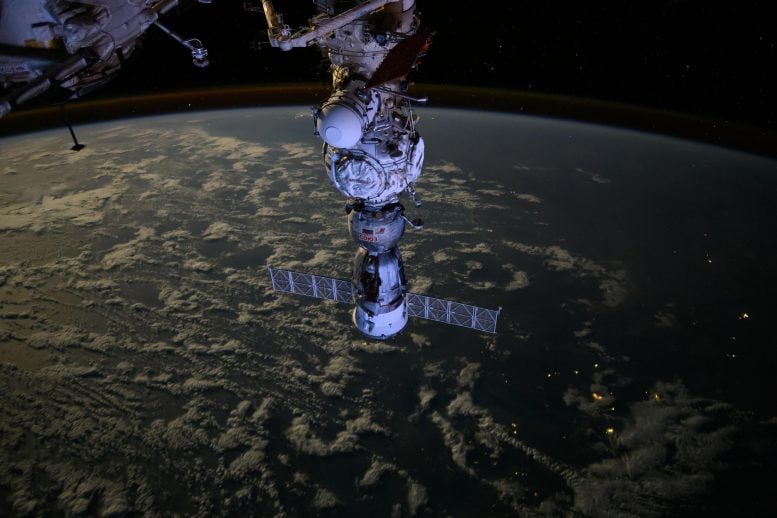
The Soyuz MS-25 crew ship is picture docked to the Prichal docking module as the International Space Station orbited 271 miles above the Bass Strait in between Australia’s mainland province of Victoria and its island province of Tasmania. Credit: NASA
Roscosmos Flight Engineer Alexander Grebenkin spent a portion of his day on a host of orbital household duties including plumbing and camera battery charging. He later partnered with Kononenko and Chub and recorded a series of congratulatory and greeting videos for their home space agency.


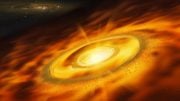
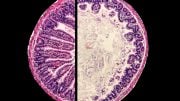
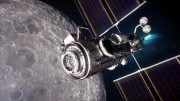


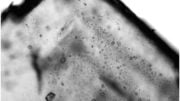

Be the first to comment on "Research and Resupply: Cygnus Operations and Starliner Briefings on the ISS"